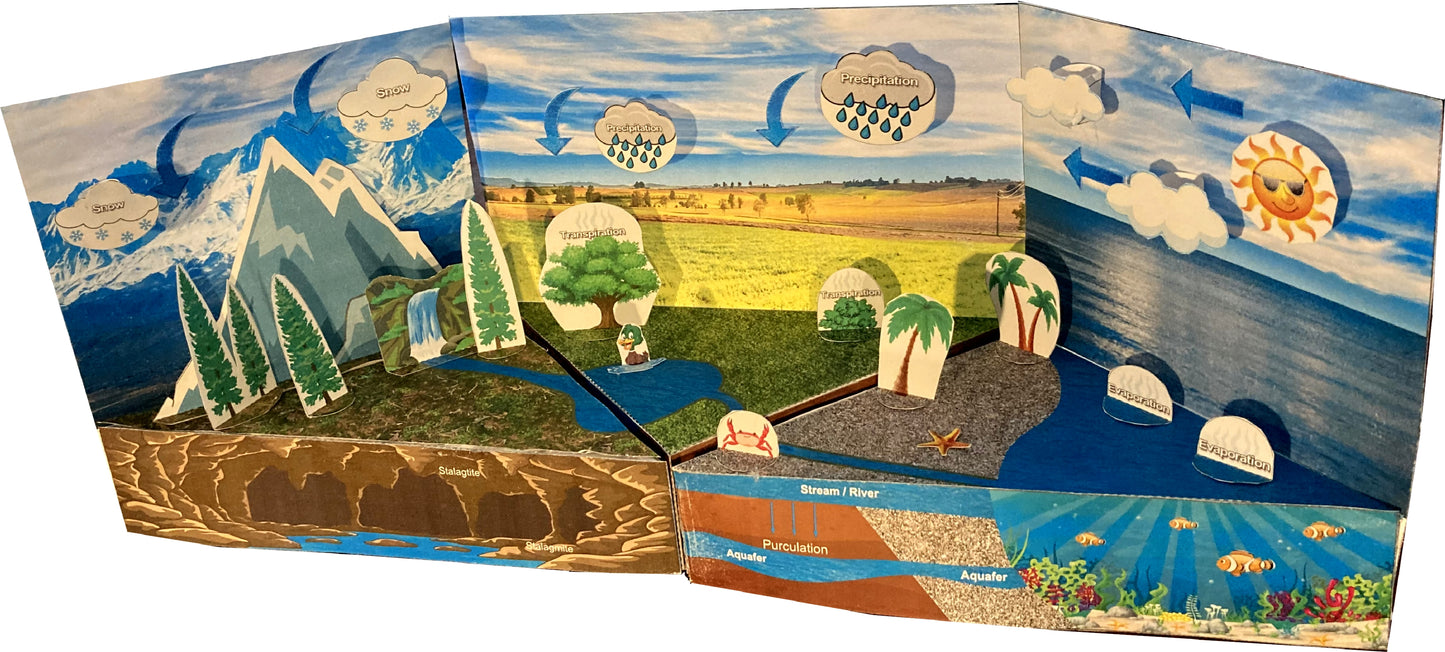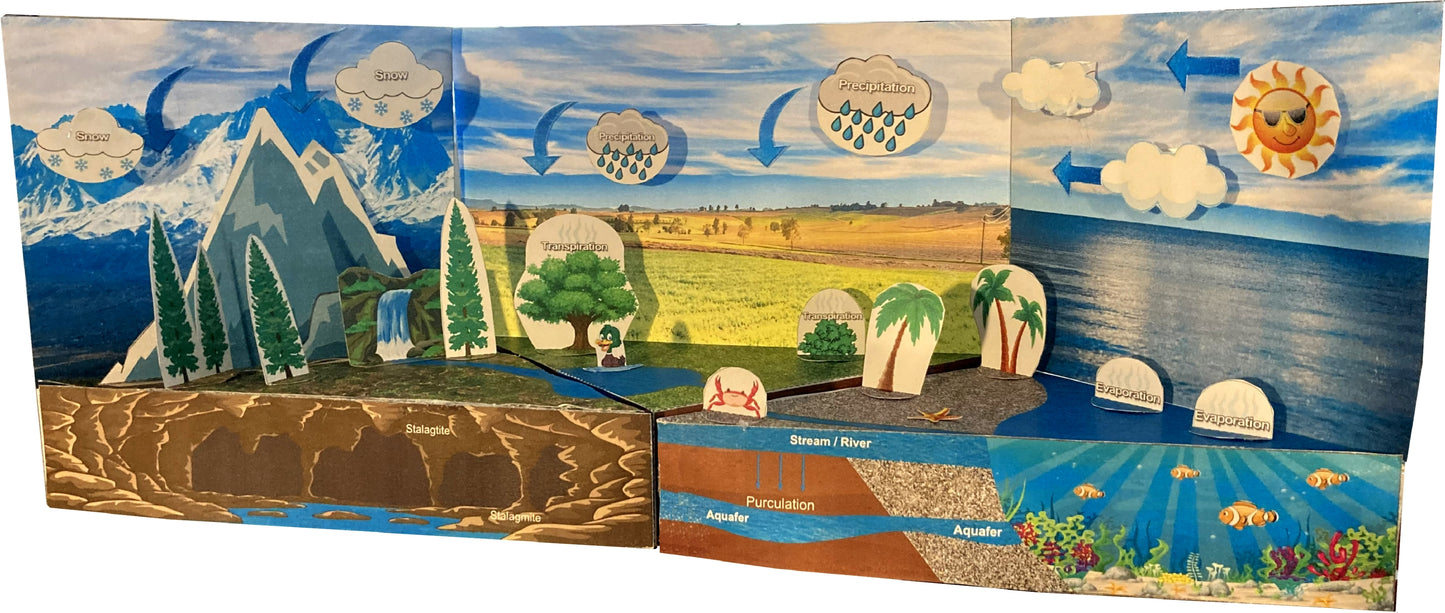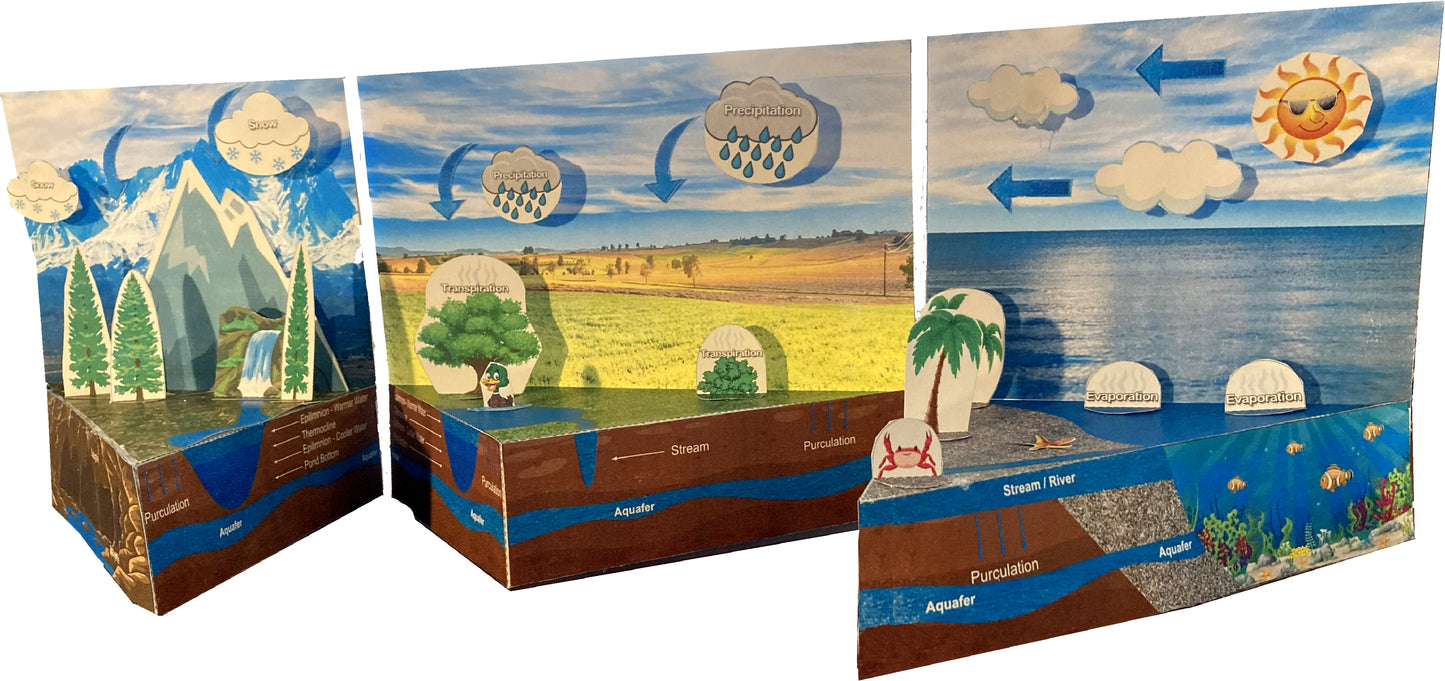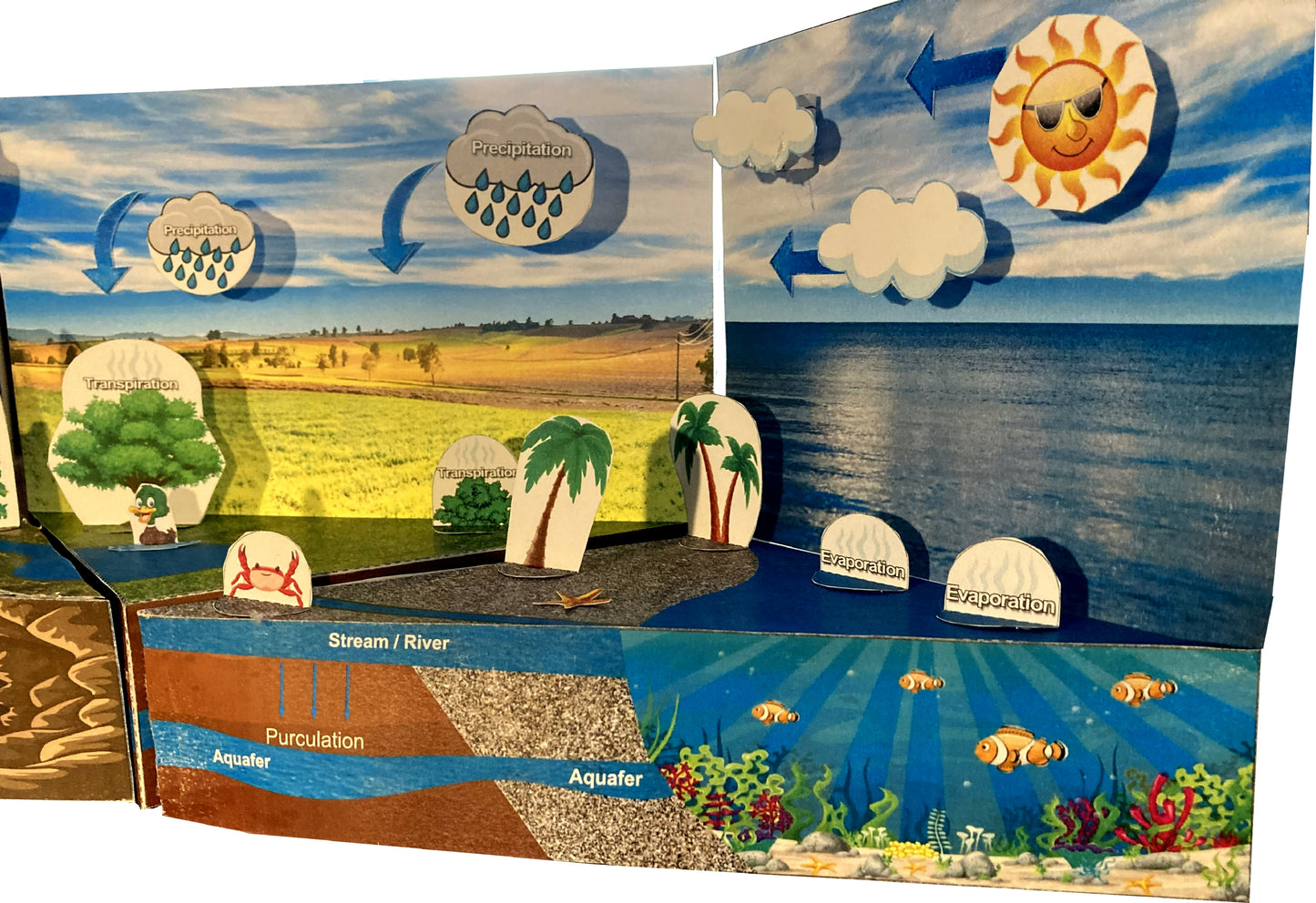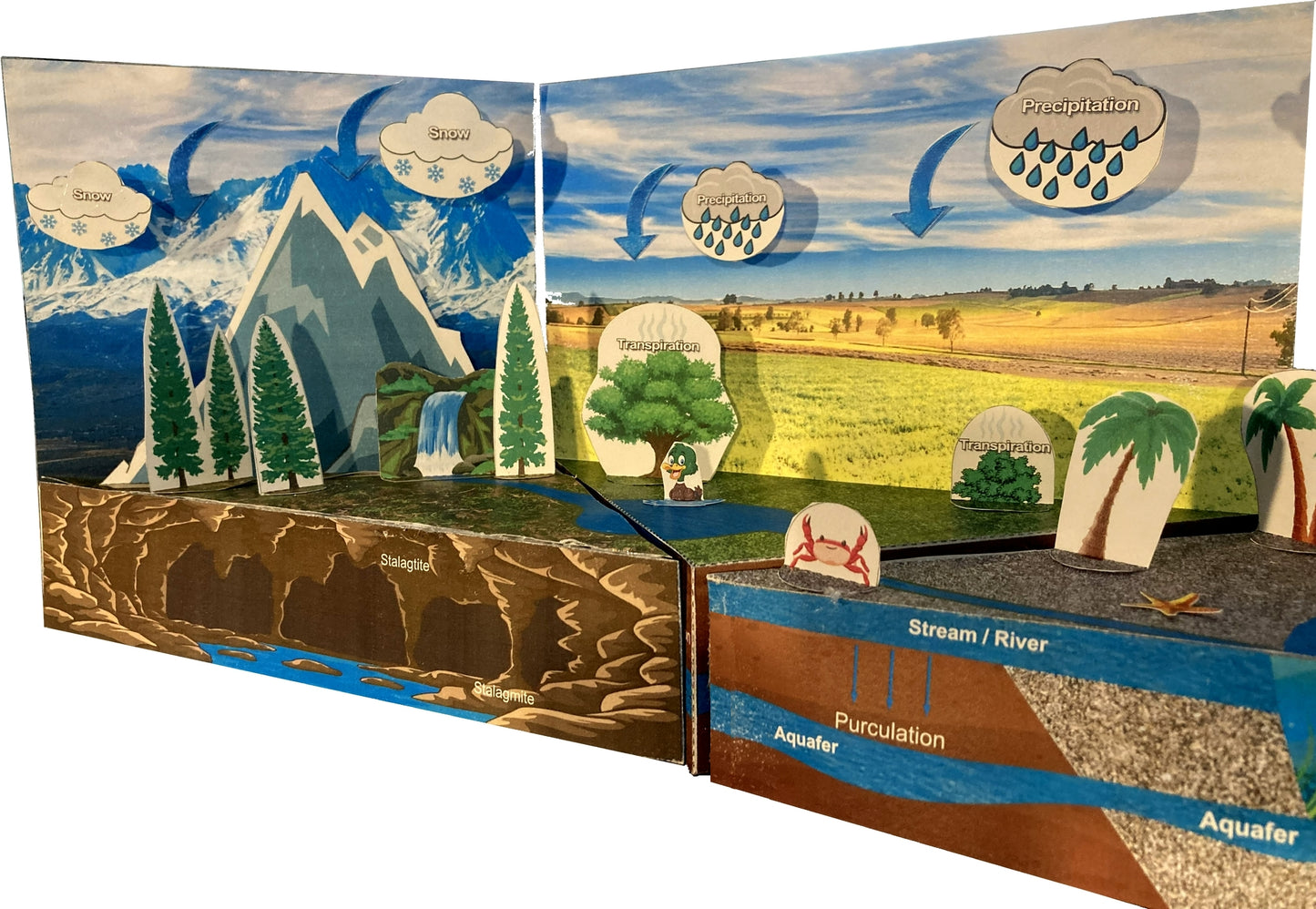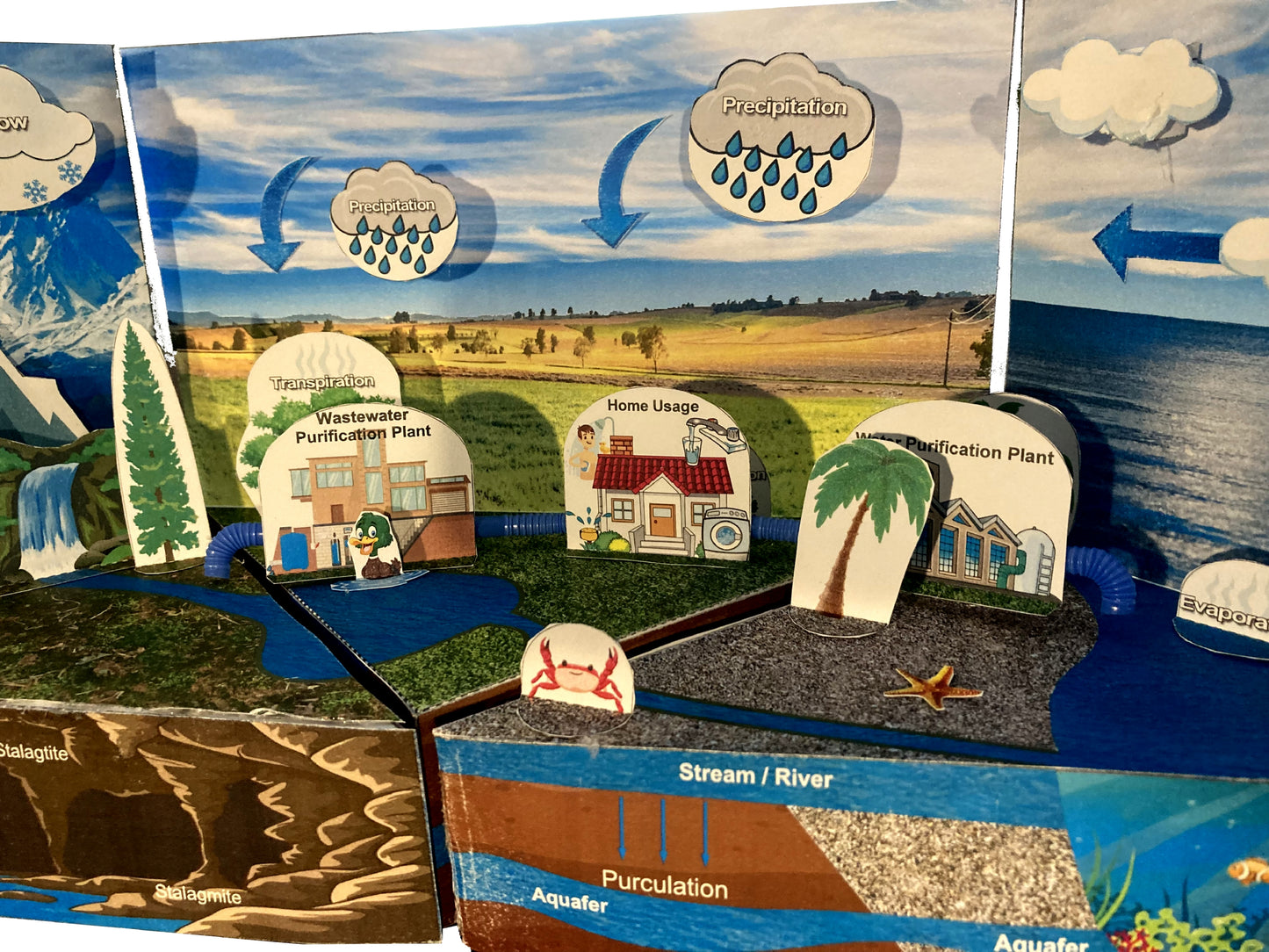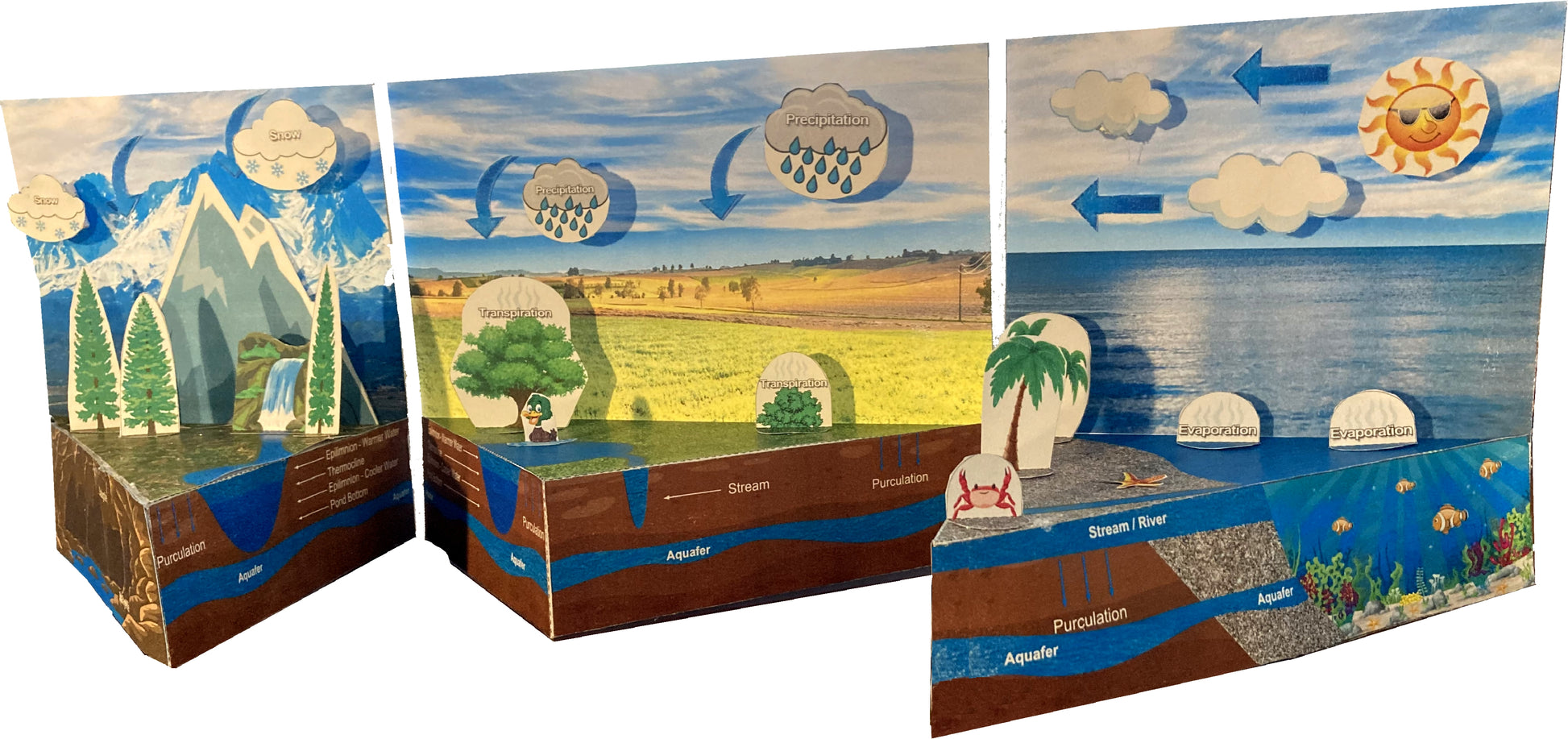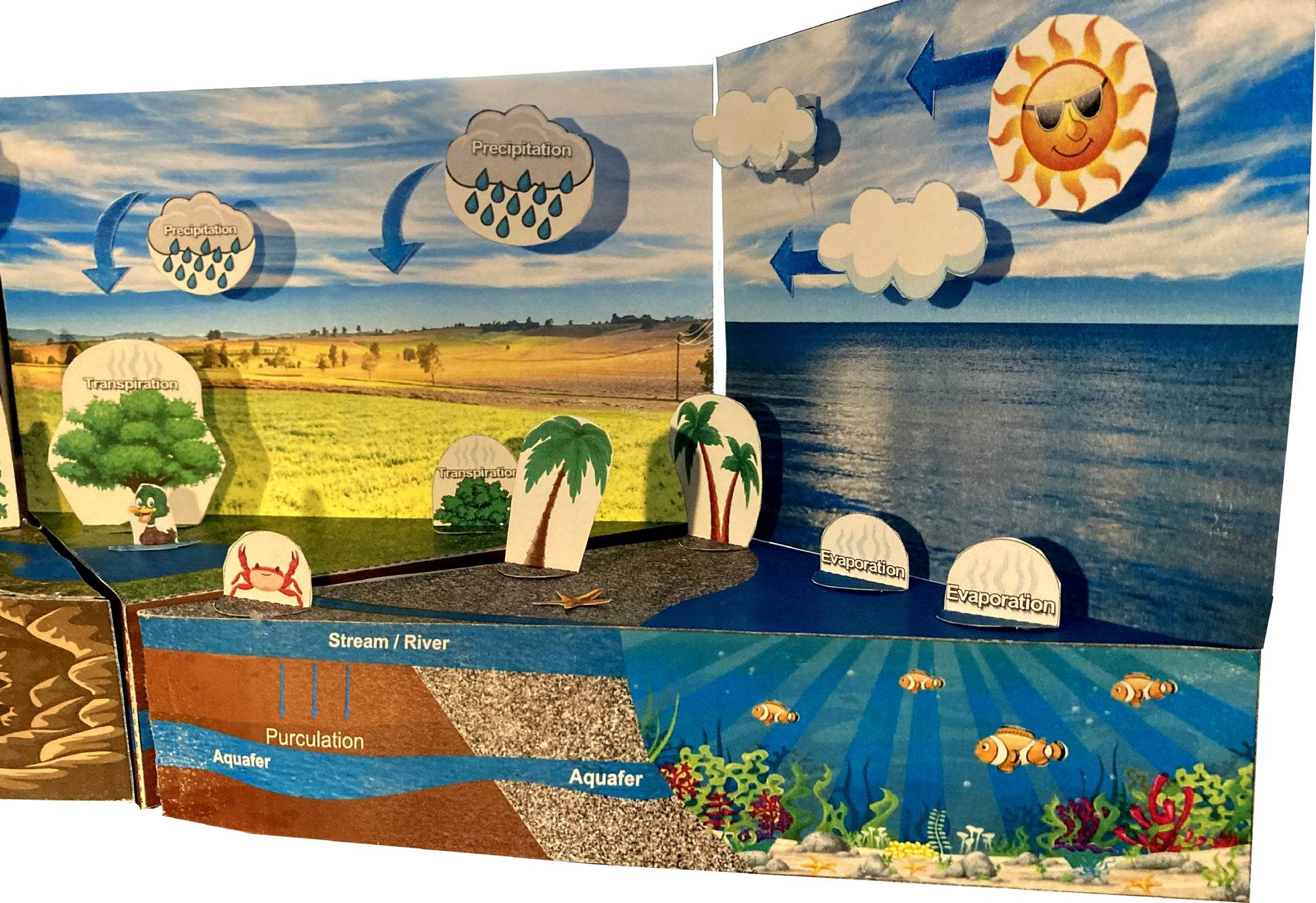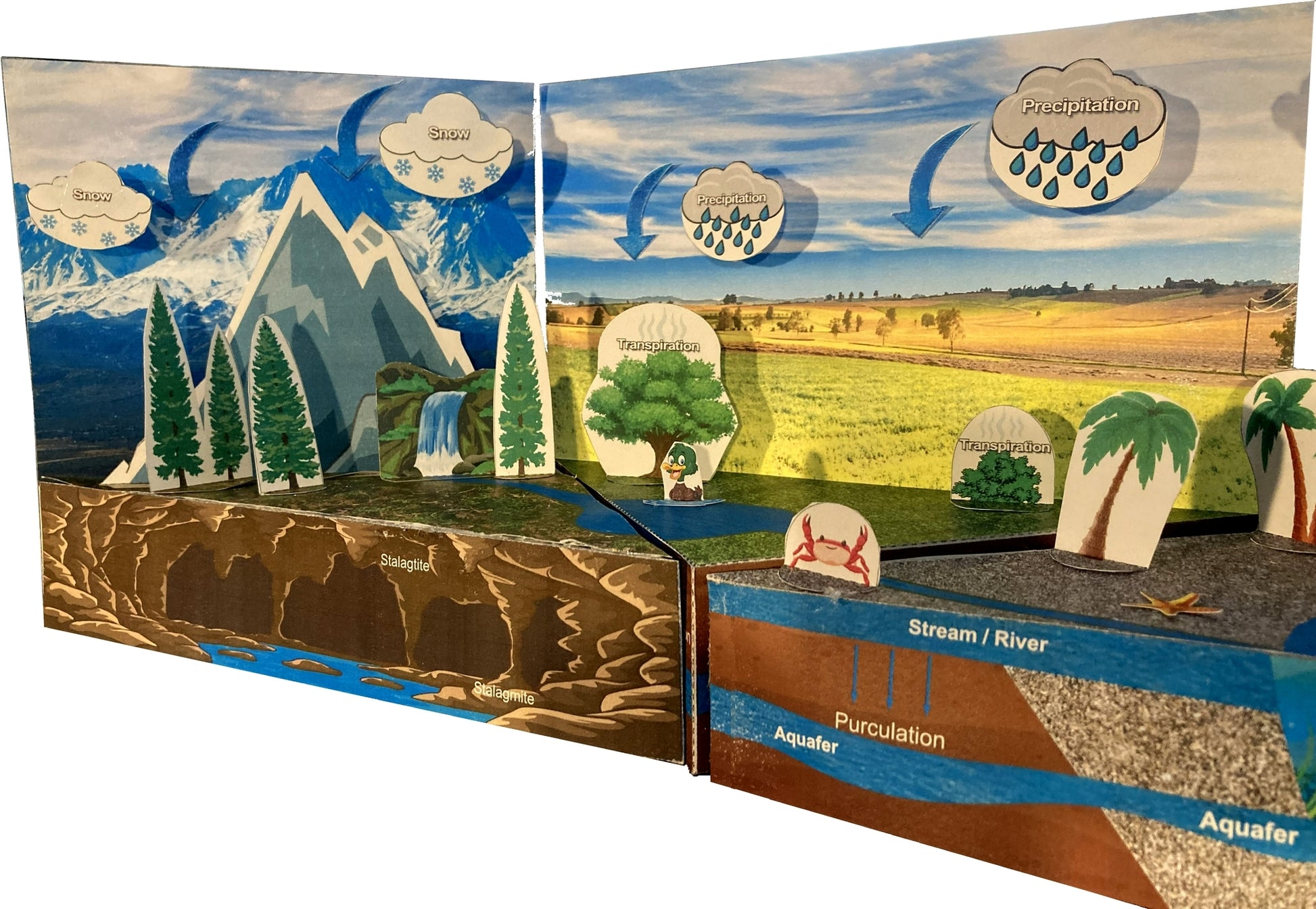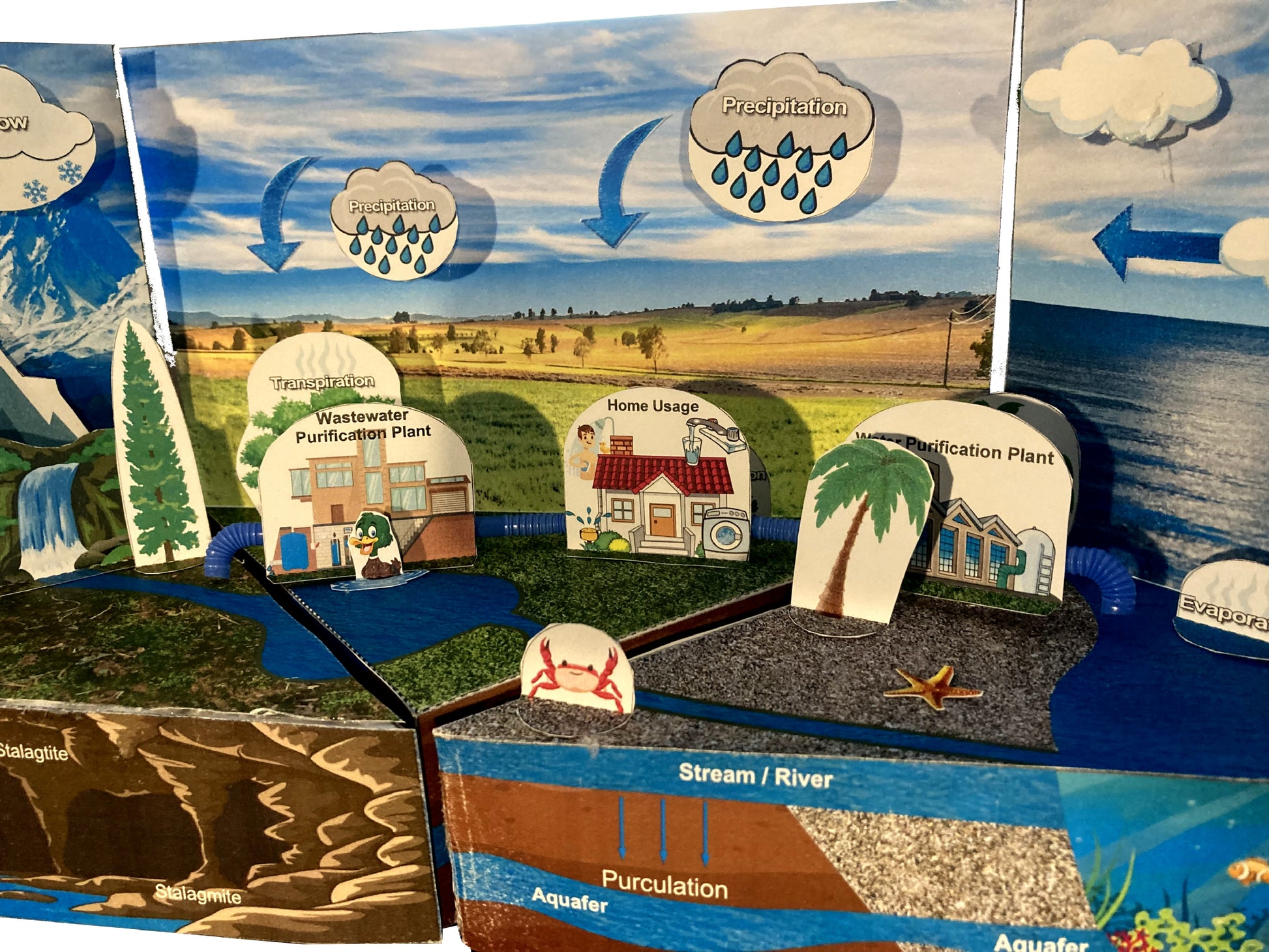Water Cycle - Evaporation, Precipitation, Rain, & Snow - Paper Model Project Kit
Water Cycle - Evaporation, Precipitation, Rain, & Snow - Paper Model Project Kit
Couldn't load pickup availability
🌟 Welcome to Paper Models Online – Your Shortcut to Academic Excellence! 🌟
Are you tired of stressing over last-minute school projects? Look no further! Paper Models Online is here to make your academic life a breeze.
🚀 Why Choose Us?
At Paper Models Online, we understand the pressure of looming deadlines and the desire for that coveted "A" grade. That's why we've crafted the perfect solution for you! Whether you're a student aiming for extra credit, a parent looking for quality time with your kids, or just someone in need of a break from the chaos, our paper models are your ticket to success!
💻 Instant PDF Download OR Pre-Printed & Shipped
You're in control! Choose from our instant PDF download, starting at just $9.95 for the 7"x10" size or $11.95 for the 10"x13" size.
Print it on your home or office printer using regular paper, or opt for the hassle-free pre-printed option. We'll ship it directly to your doorstep for a flat $5 fee via USPS First-Class Parcel, ensuring you get it in 1-3 days!
✂️ Easy Assembly, Maximum Impact
With just a pair of scissors, some glue, and an hour of your time, you can turn these paper sheets into stunning three-dimensional architectural replicas or complete science projects. The images on our website are real models made from our kits, and we even provide a history to help you craft an impressive report.
🎨 Unleash Your Creativity
Not into mission kits? No worries! Our models double as templates for your creative genius. Paint, trace, adjust sizes—your imagination is the only limit! Create a custom masterpiece that reflects your unique style and personality.
🛒 The Buying Process Made Simple
- Choose Your Size: 7"x10" or 10"x13"
- Choose Your Delivery: Instant PDF download or pre-printed and shipped
- Purchase Your Model: It's that easy!

📦 Typical Kit Sample
Each kit includes 8 to 18 pages, providing everything you need to bring the model to life. An "exploded view" guides you through assembly, and a complimentary history adds that extra touch for your report. Impress your teacher not just with creativity but also with your research skills!
Don't let deadlines stress you out. Choose Paper Models Online for your next school project, and let us be Your Best Way To Get An "A"! 🌟
 |
 |
 |
| Exploded View | Sample Pieces | Finished Model |
Free History For Your Report
The Water Cycle
Evaporation and the Rainwater Cycle
The water cycle, also known as the hydrological cycle, is a fundamental process that governs the movement of water on Earth. It is a continuous cycle through which water evaporates from the Earth's surface, forms clouds, and eventually falls back to the surface as precipitation. This intricate dance of evaporation and rainwater, known as the water cycle, plays a crucial role in maintaining the Earth's water balance and supporting life on the planet.
Evaporation: The Beginning of the Journey
Evaporation is the process by which water transforms from a liquid state to a gaseous state, primarily due to the input of solar energy. This phenomenon occurs when the sun's rays heat up bodies of water, such as oceans, lakes, and rivers. As the water absorbs heat energy, its molecules gain kinetic energy, causing them to move faster. This increased movement leads to some water molecules breaking free from the liquid surface and becoming water vapor. This vapor rises into the atmosphere, where it combines with air to form invisible water vapor.
Evaporation isn't limited to bodies of water; it also occurs from moist surfaces in the soil and plants. Plants release water vapor through tiny openings in their leaves in a process called transpiration. This water vapor, along with the water vapor from evaporation, contributes to the overall moisture in the atmosphere.
The Journey Continues: Condensation and Cloud Formation
After water vapor rises into the atmosphere, it cools down due to the decrease in temperature at higher altitudes. As the vapor cools, its molecules lose kinetic energy and slow down, eventually forming tiny water droplets. This process is known as condensation. These water droplets gather around tiny particles in the air, such as dust or salt, to form visible cloud droplets.
Clouds are a crucial part of the water cycle, as they store water in the atmosphere and transport it across different regions. They come in various shapes and sizes, ranging from fluffy cumulus clouds to wispy cirrus clouds. The movement of clouds is influenced by wind patterns, atmospheric pressure, and temperature gradients.
The Culmination: Precipitation
As the water droplets in clouds continue to grow, they eventually become heavy enough to fall to the Earth's surface. This process, known as precipitation, is the final step in the water cycle. Precipitation can take various forms, including rain, snow, sleet, and hail, depending on factors such as temperature and atmospheric conditions.
When the water droplets or ice crystals in clouds become too heavy to remain suspended, they start falling towards the ground under the force of gravity. The size of the droplets or crystals determines the type of precipitation that reaches the surface. Rain occurs when the droplets are large and liquid, while snow forms from frozen ice crystals. Other forms of precipitation, like sleet and hail, involve complex processes that occur as the precipitation falls through different layers of the atmosphere.
Completing the Cycle: Runoff and Groundwater
Once precipitation reaches the ground, it doesn't just disappear. It flows across the surface as runoff, eventually making its way into streams, rivers, and eventually the oceans. Runoff plays a crucial role in shaping the Earth's landscapes, eroding rocks, and creating valleys and canyons.
A significant portion of precipitation also infiltrates the ground, replenishing underground water reservoirs known as aquifers. This water, called groundwater, can remain stored for years before resurfacing through springs or being drawn out through wells for human consumption and agricultural use.
In conclusion, the water cycle, driven by the processes of evaporation, condensation, and precipitation, is an essential natural process that sustains life on Earth. It ensures a continuous supply of fresh water to various ecosystems and human societies around the world. Understanding the water cycle is not only fascinating but also vital for addressing water resource management, weather patterns, and environmental conservation. As we continue to explore and study the intricate workings of the water cycle, we gain a deeper appreciation for the delicate balance that supports our planet's dynamic ecosystems.
© Copyright – Paper Models, Inc. – All Rights Reserved
Share
